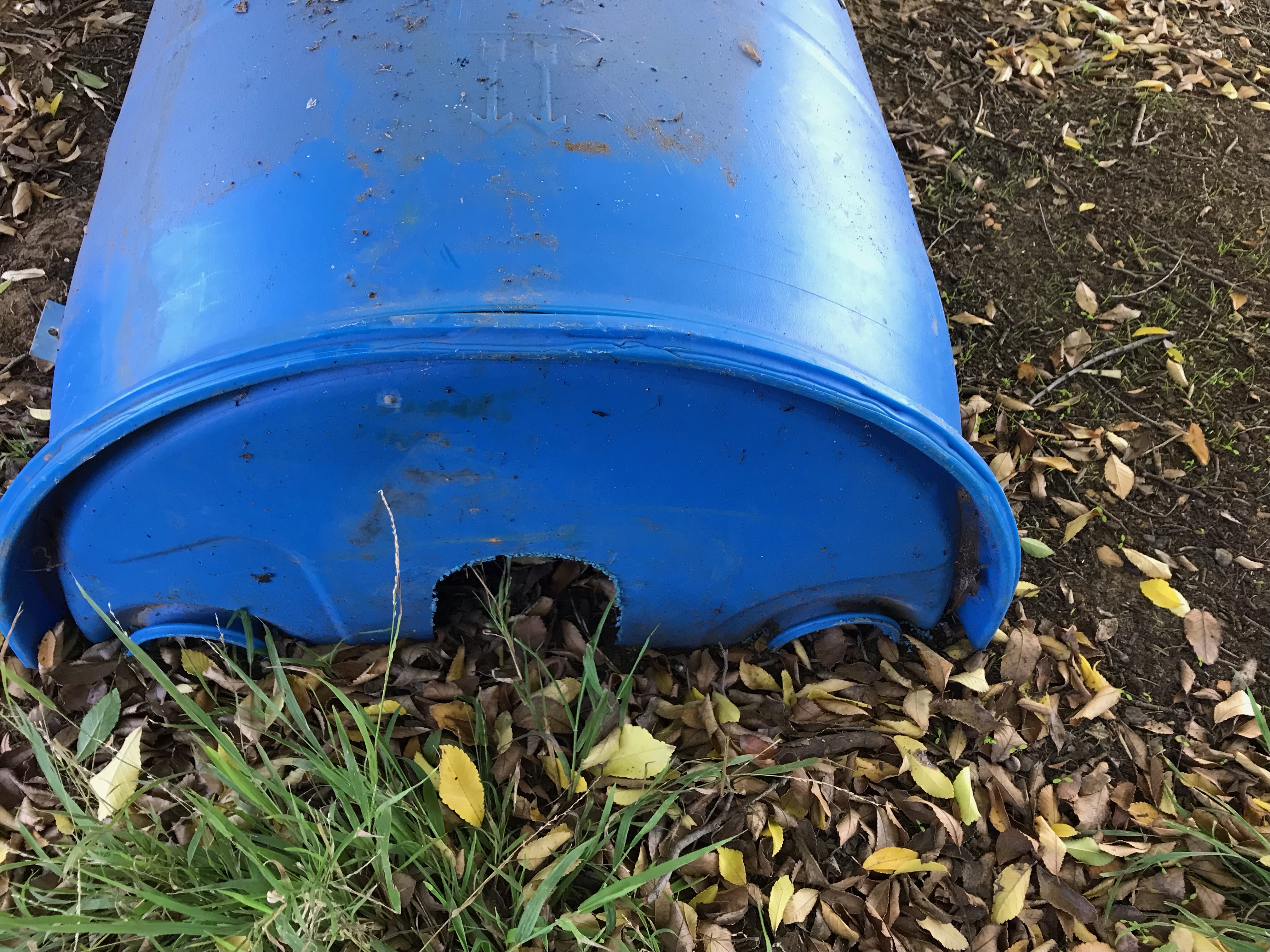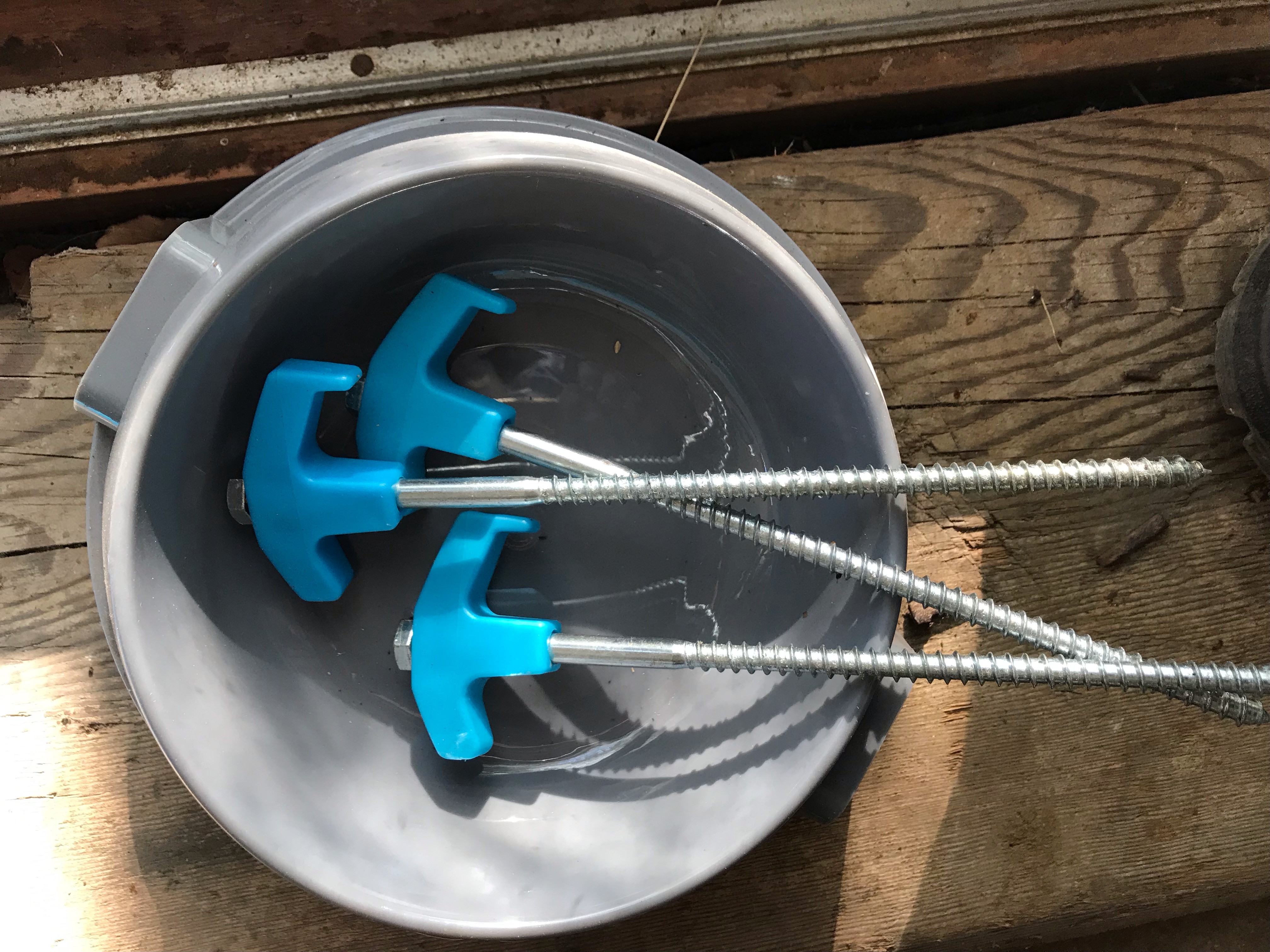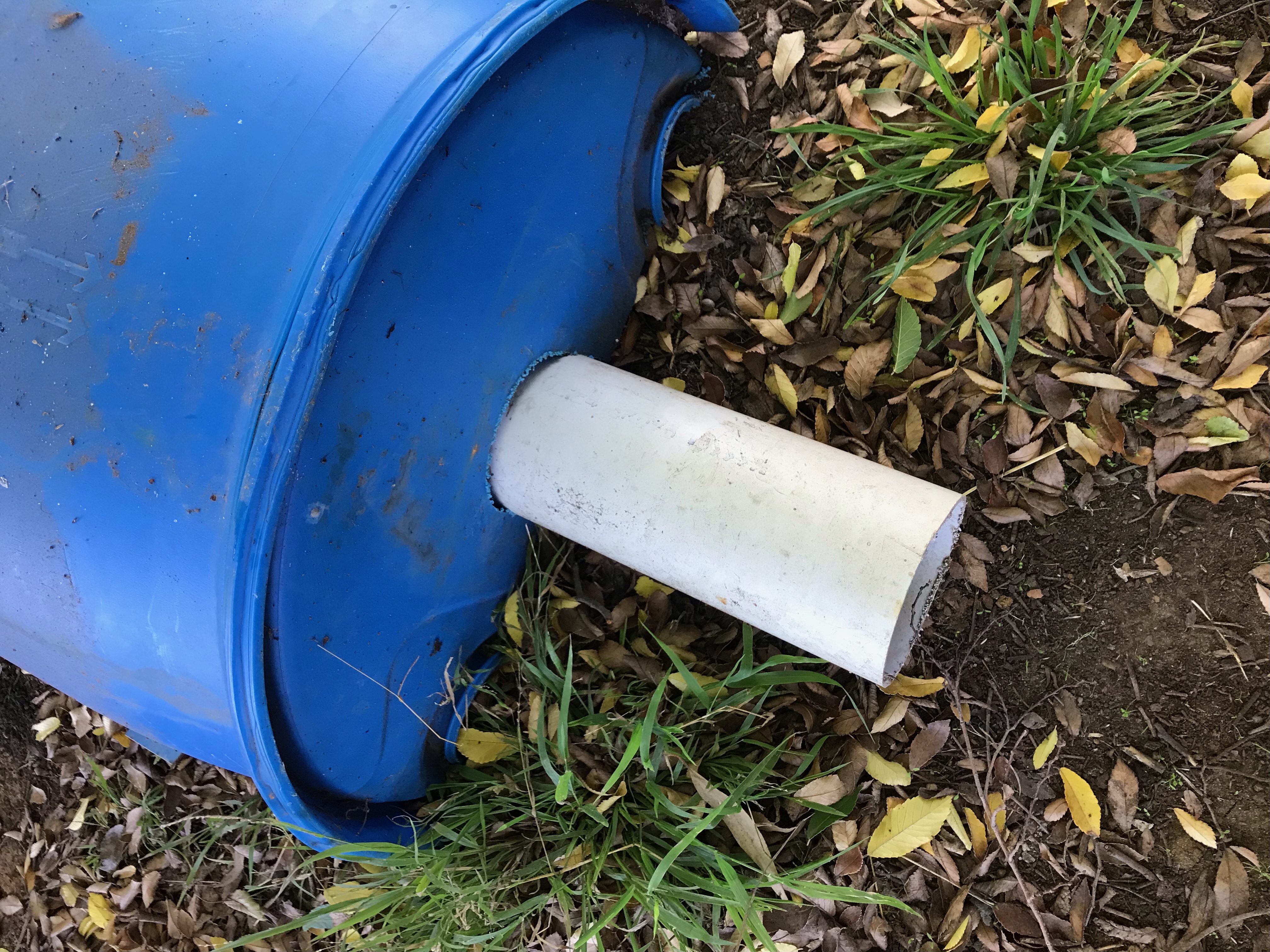Bait stations for small properties
Why do we need bait stations?
Although control programs using suitably approved poisons (1080 or sodium fluoroacetate, and pindone) are acceptable methods for reducing the impact of rabbits, the use of such pesticides is undergoing ever closer scrutiny. Bait stations provide one means by which potential risks to non-target species may be further reduced. When properly secured and isolated, bait stations may also enable baiting programs to be undertaken in the presence of domestic livestock, and during adverse weather conditions.
However, trail baiting should be your first choice for baiting programs where possible because bait trails are much more effective in reducing rabbit numbers.
What type is best?
The acceptability of a number of different bait station designs to urban and free-ranging wild rabbits has been examined. The raised concrete slab (60x60cm, on house bricks) and the drum (200L drum cut in half longitudinally, with rabbit access holes each end) were the designs most acceptable to rabbits. However, the slab design allowed far greater access to the bait by non-target animals, particularly granivorous birds, so we do not recommend its use. The drum station is the best design if you need to use bait stations for controlling rabbits.
How to use bait stations effectively
Depending upon the size of the area where rabbits are to be controlled, the spacing between individual stations should not be more than 30m (urban use) to 100m (broadacre). These distances may need to be reduced if the stations are to be used during periods when rabbits have well defined territories, such as during the breeding season.
How effective are bait stations?
Against urban rabbits:
Because 1080 cannot be used in or around built-up areas, pindone is the only pesticide available for use in these situations. However, reductions in rabbit numbers achieved with pindone in bait stations can be highly variable and may have little effect, or may achieve kills of up to 80%. The average reduction in numbers is usually around 50%. More importantly, it can take rabbits a considerable period to become accustomed to the stations, and it may take 30 to 60 days for any noticeable reduction in numbers. Thus, good forward planning is required to ensure you gain the maximum benefit from any bait station program. You should be pro-active and undertake your rabbit control program before planting/sowing, particularly with crops of high value, for example market gardens or horticultural crops.
Also remember that the bait stations alone may not necessarily alleviate your rabbit problem and other control measures may need to be undertaken, for example trapping or shooting. Although the initial cost outlay for rabbit-proofing your boundary fences with wire-netting may be high (approximately $1600/km), this will provide a better long-term and cost-effective solution to many rabbit problems in urban areas.
Broadacre use:
The use of bait stations alone is unlikely to provide long-term, cost-effective mitigation from rabbit damage in broadacre situations.
From https://www.agric.wa.gov.au/baits-poisons/rabbit-control-bait-stations
On larger properties, Pindone is usually spread using a bait layer. Once the grooves are made, the free feeds and baited feeds can be put in them. Pindone oats are coloured to be unattractive to birds.
For people in domestic situations, near pets and children, it maybe decided to use a bait 'station'. Bait stations can be as simple as a temporary fence with wire that has holes too small for a dog or cat or child and a feed bowl protected from the rain.
Some land-holders use bait stations made from 205 litre drums cut in 2 lengthwise. In this case, the bait is placed in a bowl inside the drum.



A further refinement can be the addition of a pipe at the entrance to the drum. It has been found that rabbits are happy to crawl through but birds are reluctant.

Whatever method is chosen, it is recommended to offer the rabbits a couple of free feeds and then 2 - 4 baited feeds. Baiting in the same location or nearby should not happen continuously - perhaps once a month at first?
For more information, see:
- https://cdn.environment.sa.gov.au/landscape/docs/Factsheet-template-baiting-rabbits-with-pindone-carrots.pdf
- https://vran.com.au/control_methods/baiting-pindone-with-carrots-oats/
- https://pestsmart.org.au/toolkit-resource/overview-of-poison-baiting-for-rabbit-control/
(includes a video presentation)
Bait layers

Picture of Jensen Bait layer from http://jensanfarmservices.com/rabbit-baiting-units